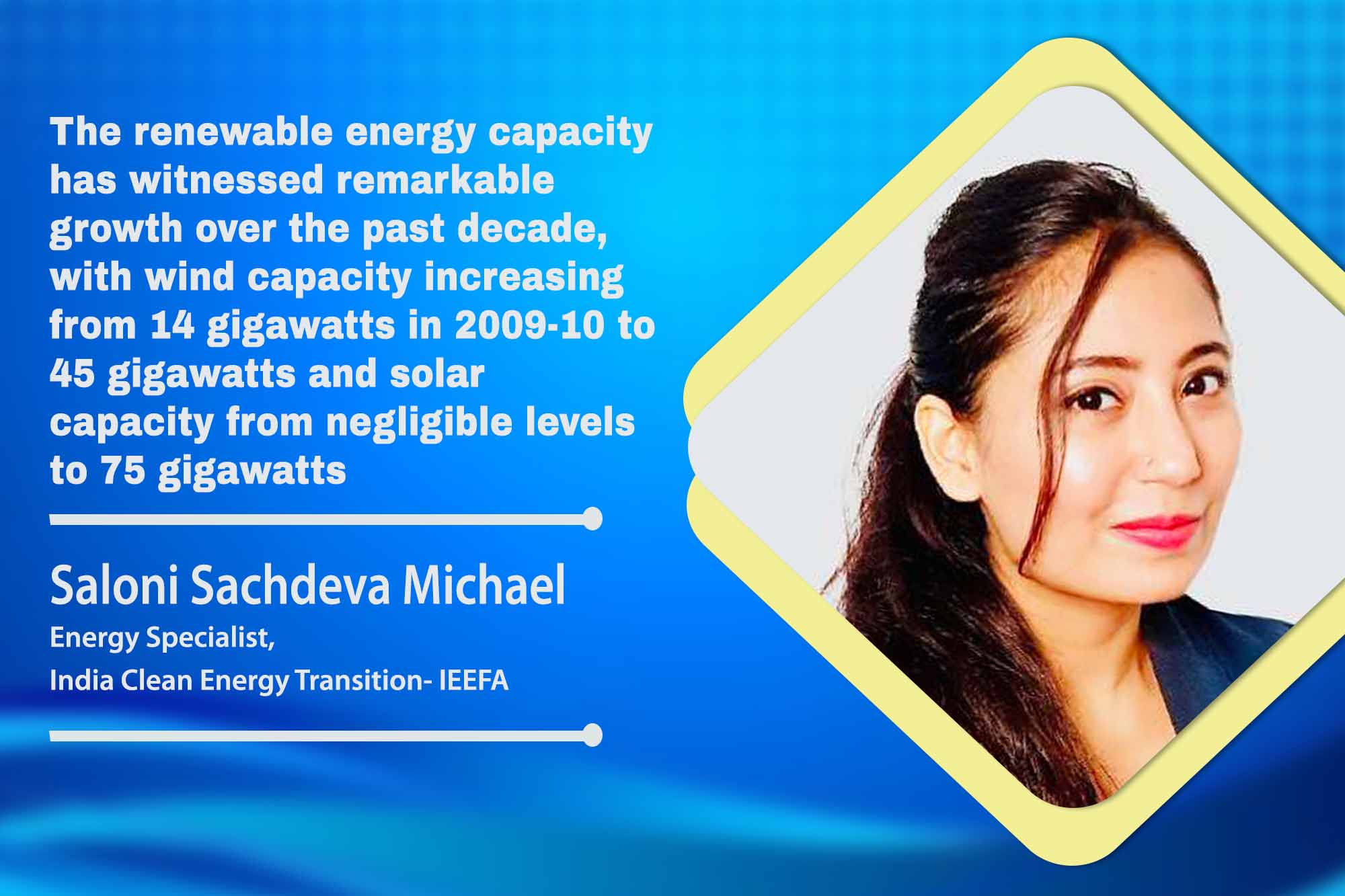India paving the way to meet 500GW RE target
By EPR Magazine Editorial March 27, 2024 11:32 am IST
By EPR Magazine Editorial March 27, 2024 11:32 am IST

The renewable energy capacity has witnessed remarkable growth over the past decade, with wind capacity increasing from 14 gigawatts in 2009-10 to 45 gigawatts and solar capacity from negligible levels to 75 gigawatts.
By addressing the three key areas, technology advancement, state participation, and supply chain strengthening, India can overcome challenges and surpass its 500-gigawatt renewable energy target, paving the way for a sustainable energy future. Collaborative efforts between government, industry, and civil society are essential to realise the country’s renewable energy potential and contribute to global efforts in combating climate change. Through innovation, collaboration, and determination, India can lead the transition to a cleaner, greener energy landscape, setting an example for nations worldwide. Saloni Sachdeva Michael delves into renewable energy adoption, outlining challenges and opportunities to share her thoughts with the EPR Magazine.
Renewable energy advancements
Energy evolution in India has been marked by significant strides, positioning it as a global leader in renewable energy deployment. However, to meet ambitious targets and address evolving demand dynamics, concerted efforts in technology advancement, state involvement, and supply chain strengthening are imperative. The country’s ascent from the 13th to the 5th largest economy globally underscores its commitment to renewable energy adoption. This commitment has translated into tangible achievements, with electricity production reaching approximately 1700 terawatt-hours in 2023, making India the 3rd largest electricity producer worldwide. Such achievements underscore the nation’s capacity to embrace renewable energy at scale.
Nevertheless, challenges persist on the demand side. Factors such as extreme weather conditions and the emergence of new loads like electric vehicles and industrial decarbonisation are driving peak demand upwards. While renewable energy plays a pivotal role in meeting this demand, questions regarding its sufficiency loom large, necessitating proactive measures.
Challenges and solutionsThe renewable energy capacity has witnessed remarkable growth over the past decade, with wind capacity increasing from 14 gigawatts in 2009 to 10 to 45 gigawatts and solar capacity from negligible to 75 gigawatts. However, achieving the ambitious 500-gigawatt target demands consistent additions of 40-45 gigawatts annually, starting from 2023, posing a considerable challenge. To overcome these challenges, attention must be focused on three key areas. Firstly, technological advancement and grid modernisation are paramount. Notable advancements, such as the transition from 250-kilowatt wind turbines to 3-5 megawatt plants and efficiency gains in solar panels, underscore the potential for innovation to enhance energy productivity. Furthermore, integrating hybrid projects combining wind, solar, and storage technologies enhances reliability and flexibility, which is essential for grid stability.
Secondly, the role of states in driving renewable energy deployment cannot be overstated. States like Karnataka, Rajasthan, Tamil Nadu, and Maharashtra have emerged as frontrunners in renewable energy adoption. However, there remains untapped potential, with these states utilising only a fraction of their renewable energy potential. By leveraging their resources, infrastructure, and policy frameworks, states can accelerate the transition to renewable energy and emerge as renewable energy hubs, fostering sustainable economic growth. Lastly, strengthening the renewable energy supply chain is critical to ensure resilience and sustainability. India’s heavy reliance on imports, particularly from countries like China, for critical minerals required in solar panels, batteries, and electric vehicles underscores vulnerabilities in the supply chain. Initiatives to diversify the supply chain through global partnerships, acquisition of international mines, and development of domestic mining capabilities are underway.
India has the potential to emerge as a refining and processing hub for critical minerals, capitalising on recyclability to manage end-of-life cycles for renewable energy components sustainably.
Spokesperson: Saloni Saloni Sachdeva Michael, Energy Specialist, India Clean Energy Transition- IEEFA
We use cookies to personalize your experience. By continuing to visit this website you agree to our Terms & Conditions, Privacy Policy and Cookie Policy.